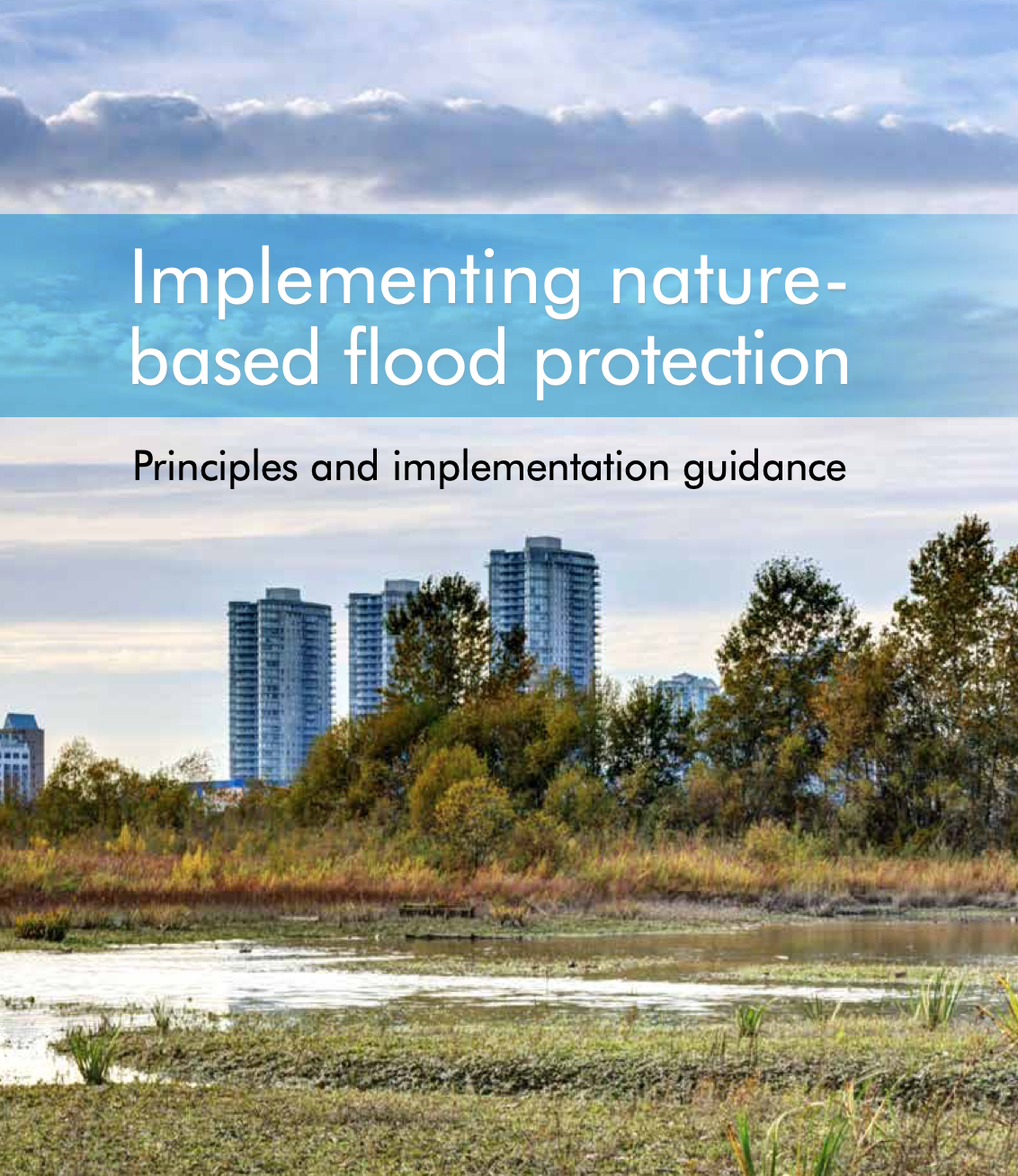© 2020-2022 The Global Program for Nature-Based Solutions for Climate Resilience. All Rights Reserved.
Effective flood risk management is critical to protect people and their livelihoods from flooding and to limit future losses. Nature-based measures and their ability to address flood risk are receiving increasing attention. Until recently, most flood risk management involved conventional engineering measures. These measures are sometimes referred to as “hard” engineering or “gray” infrastructure. Examples include building embankments, dams, levees, and channels to control flooding. Recently the concept of “nature-based solutions”, “ecosystem-base adaptation”, “eco-DRR” or “green infrastructure” has emerged as a good alternative or complement to traditional gray approaches. Nature-based solutions make use of natural processes and ecosystem services for functional purposes, such as decreasing flood risk or improving water quality. The objective of this document is to present five principles and implementation guidance for planning, such as evaluation, design, and implementation of nature-based solutions for flood risk management as an alternative to or complementary to conventional engineering measures. The potential users of these principles and implementation steps are professionals in risk management and climate adaptation, NGOs, donors, and international organizations. This guidance was developed in cooperation with a large and diverse group of international funding agencies, research institutes, NGOs, governmental organizations, and engineering firms.



